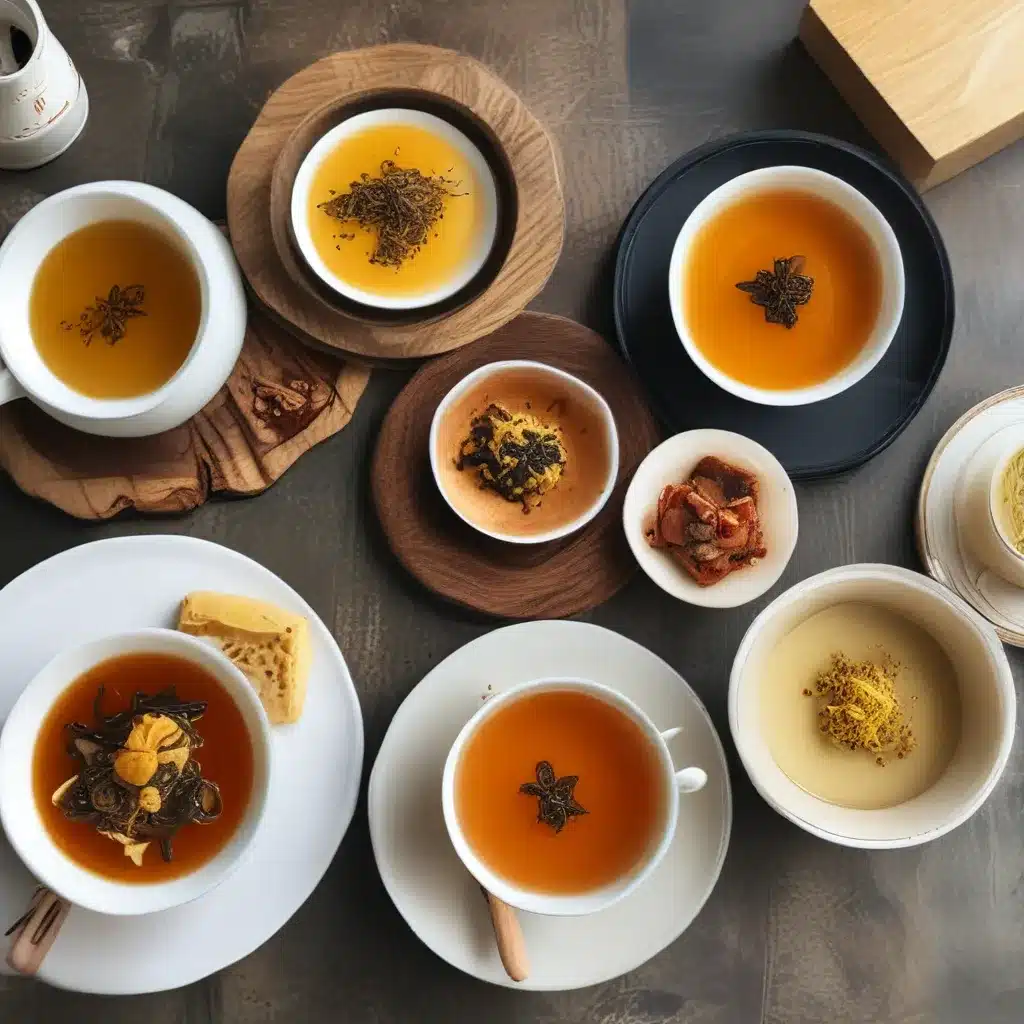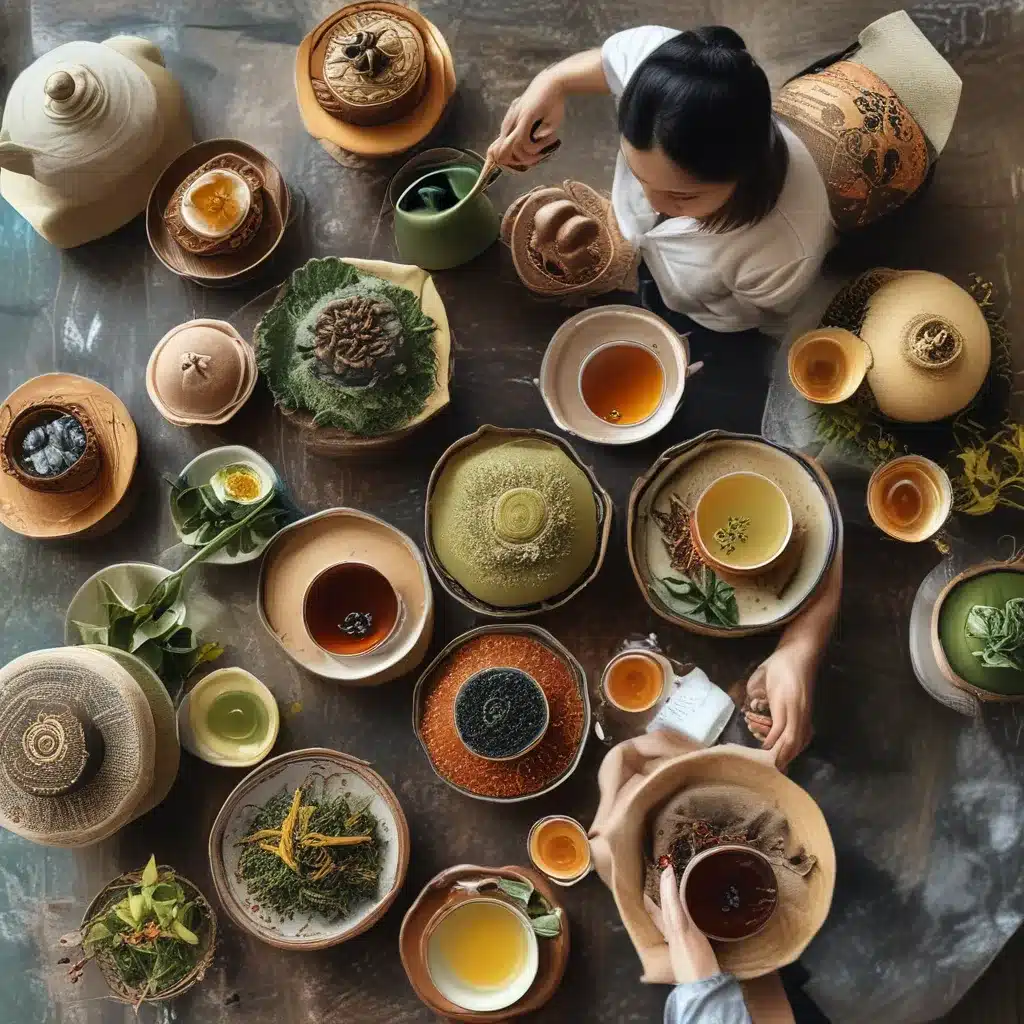
Inspiring a Love for Nutritious Cuisine
As a mother of two young, energetic daughters, I know all too well the daily challenges of getting kids to embrace healthy eating. Between the constant barrage of sugary, processed snacks and their seemingly unquenchable desire for fast food, it can feel like an uphill battle to instill an appreciation for wholesome, nourishing meals. But I’m here to tell you that it is possible – and incredibly rewarding – to foster a love for nutritious cuisine from an early age.
My daughters and I recently returned from a trip to my hometown of Shanghai, where I was reminded of the vibrant, flavorful dishes that have been nourishing families for generations. The beautifully balanced flavors, the abundance of fresh produce, the thoughtful use of spices and seasonings – it was a feast not just for the palate, but for the senses. And I knew I had to bring that experience home, to create meals that would delight my kids’ taste buds while fueling their growing bodies with essential vitamins, minerals, and antioxidants.
Rediscovering the Joys of Home-Cooked Meals
When I first moved to Copenhagen nearly a decade ago, I found myself in a similar predicament. Bread had become the cornerstone of my diet, with my love for the hearty, dense rye loaves that are a staple in Denmark. But as I began to explore a healthier, more plant-based way of eating, I realized I needed to wean myself off bread and find alternative sources of sustenance. The Life-Changing Loaf of Bread was a revelation, a nutrient-dense, gluten-free alternative that satisfied my cravings without the pitfalls of refined carbohydrates.
The same mindset shift needed to happen with my kids. It wasn’t that I wanted to deprive them of the foods they loved, but rather to introduce them to a whole new world of flavors and textures that would leave them feeling nourished and energized. And so, I set out on a mission to rediscover the joys of home-cooked meals, drawing inspiration from the vibrant cuisine of my childhood.
Cultivating a Palate for Adventure
One of the keys to successfully getting kids to embrace healthier eating is to approach it with a spirit of adventure and exploration. Rather than forcing them to eat foods they may initially turn their noses up at, I’ve found that allowing them to participate in the cooking process – from shopping for ingredients to hands-on meal preparation – helps them develop a sense of ownership and pride in the final product.
Take, for example, our recent foray into homemade dumplings. My girls were skeptical at first, used to the greasy, sodium-laden versions they’d had at the local takeout joint. But when I invited them to help me carefully fold the delicate wrappers around a savory filling of minced pork, cabbage, and fragrant ginger, they were instantly hooked. The process of creating something from scratch, of seeing the transformation from raw ingredients to a steaming, delectable dish, ignited their curiosity and piqued their interest.
And the best part? They gobbled up those dumplings without a single complaint, eager to learn the names of the different fillings and dipping sauces. By involving them in the culinary journey, I was able to expand their palates and introduce them to the vibrant flavors of Shanghai-inspired cuisine.
Embracing the Rhythms of Seasonal Eating
One of the hallmarks of traditional Chinese cooking is the way it honors the natural rhythms of the seasons, utilizing produce at the peak of its freshness and nutrient density. This approach not only ensures the most flavorful dishes but also aligns with the principles of holistic health, where we seek to nourish our bodies in harmony with the cycles of nature.
As we settled back into our routine at home, I made it a priority to incorporate this seasonal mindset into our meal planning. Rather than relying on the same handful of go-to ingredients year-round, I challenged myself to explore the bounty of the local farmers market, discovering new-to-us vegetables and experimenting with creative preparation methods.
Take, for example, the humble bok choy. A staple in many Shanghai-style stir-fries, this nutrient-dense leafy green is at its peak during the cooler months. By sautéing it with fragrant garlic and a splash of tamari, I was able to introduce my kids to its tender, juicy leaves and pleasantly peppery undertones. And when spring rolled around, we delighted in the arrival of delicate, tender pea shoots, which we tossed into salads and lightly steamed as a simple side dish.
By embracing the rhythms of the seasons, I not only expanded my own culinary repertoire but also helped my kids develop a deeper appreciation for the connection between the food on their plates and the natural world around them. It’s a lesson that extends far beyond the kitchen, instilling a lifelong respect for the nourishing power of whole, unprocessed ingredients.
Cultivating Culinary Confidence
Of course, the journey of getting kids to embrace healthy eating isn’t always a smooth one. There will be times when their taste buds revolt, when they stubbornly insist on the familiar comfort of chicken nuggets and french fries. But rather than view these moments as setbacks, I’ve learned to approach them as opportunities to build culinary confidence – both in myself and in my daughters.
One strategy that has proven particularly effective is to incorporate familiar flavors and textures into new, nutritious dishes. For instance, when my youngest daughter initially balked at the idea of a stir-fried vegetable medley, I decided to toss in a handful of crunchy, lightly salted cashews. The familiar crunch and savory notes were just the gateway she needed to explore the tender greens and tender-crisp carrots that surrounded them.
Similarly, I’ve found success in presenting healthy foods in a way that appeals to my kids’ senses of creativity and imagination. Instead of simply steaming broccoli and serving it on the side, I’ll roast the florets with a drizzle of fragrant sesame oil and a sprinkle of toasted sesame seeds, transforming a basic vegetable into a delightful, bite-sized snack.
And when all else fails, I’ve embraced the power of gentle persistence, patiently reintroducing foods that were initially rejected. It’s a lesson in resilience, both for my kids and for myself, as we navigate the ups and downs of developing a healthy relationship with nourishing cuisine.
Honoring Family Traditions, Forging New Paths
As I reflect on my journey of bringing the vibrant flavors of Shanghai into my family’s kitchen, I’m struck by the realization that it’s not just about the food itself. It’s about the deeper cultural traditions and values that are woven into each dish, the way they foster a sense of connection and belonging.
In Shanghai, meals are often a communal affair, with family and friends gathering around the table to share not just food, but laughter, stories, and the latest updates on each other’s lives. It’s a rhythm that I’ve sought to replicate in my own home, creating space for my kids to explore their cultural heritage while also forging new paths forward.
Whether it’s teaching them the proper way to hold chopsticks or regaling them with tales of my own childhood memories of watching my grandmother meticulously prepare her signature dumplings, I’m intentional about creating opportunities for them to feel a sense of pride and ownership in their family’s culinary legacy. And by doing so, I’m not just nourishing their bodies – I’m nourishing their souls, instilling a deep appreciation for the power of food to bring people together.
At the same time, I’m cognizant of the need to adapt traditional recipes and techniques to suit the modern, fast-paced lifestyles of today’s families. That’s why I’ve made it a point to experiment with streamlined preparation methods and ingredient substitutions that maintain the integrity of the dish while making it more accessible and approachable for busy parents.
Fostering a Lifelong Love of Healthy Eating
As I look to the future, my ultimate goal is to instill in my daughters a deep, lifelong love of healthy, nourishing cuisine. I want them to grow up with an innate understanding of the connection between the food on their plates and their overall well-being, to approach mealtimes not as a chore, but as an opportunity for exploration, creativity, and connection.
And while I know that the journey won’t always be smooth – that there will be moments of resistance, frustration, and compromise – I’m heartened by the progress we’ve already made. By introducing them to the vibrant, flavor-packed dishes of my childhood, by involving them in the process of sourcing, preparing, and sharing those meals, I’ve watched their palates expand and their enthusiasm for nutritious eating grow.
It’s a legacy that I’m proud to pass on, a gift that transcends the boundaries of culture and geography. Because at the end of the day, the power of nourishing, home-cooked food is universal – a language that speaks to the heart, the mind, and the body, regardless of where we call home.
So if you, too, are on a mission to get your kids excited about healthy eating, take heart. Embrace the rhythms of the seasons, involve your little ones in the culinary process, and don’t be afraid to get creative. Because the rewards, both tangible and intangible, are truly life-changing.






